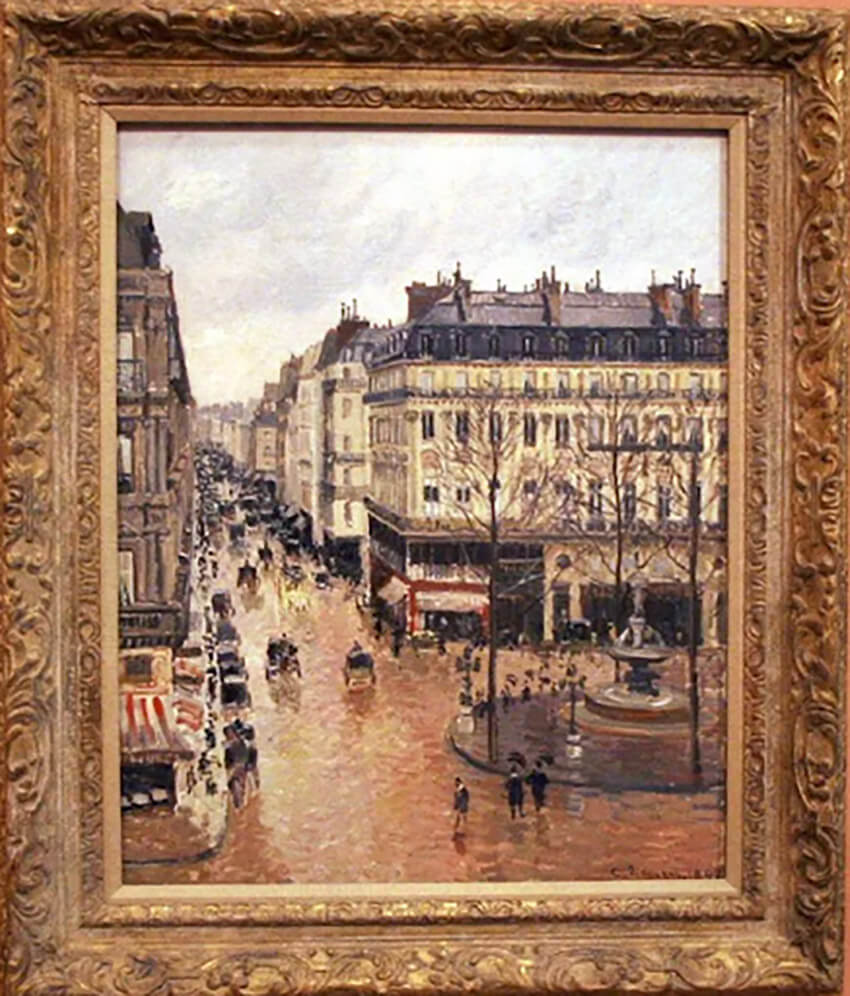4 October 2021
CAMILLE PISSARRO, RUE SAINT-HONORÉ

A painting by Camille Pissarro will be the subject of a U.S. Supreme Court case this term. Recently, the U.S. Supreme Court ruled foreign governments can be sued in U.S. courts when U.S. citizens were the victim of Nazi art looting. The Pissarro was sold under duress to a Nazi fine art expert, who promised its Jewish owner safe passage from Germany in 1939.

Camille Pissarro, Rue Saint-Honoré, Aprés-midi, Effet de Pluie (1897) Thyssen-Bornemisza Museum, Madrid.
The painting is entitled Rue Saint-Honore, Apres-midi, Effet de Pluie (1897). The owner was Lily Cassirer. The Cassirers had an important art gallery in Berlin, Germany before World War II. Cassirer and most of her family did escape from Germany. Some of them ended up in California. Lily’s sister, however, perished in a German concentration camp.
The Cassirer family asked for restitution for the painting from the German government after World War II. The painting was thought to be lost. They received $13,000 and an admission from the German government that the Cassirers were the true owners of Pissarro.
In 2000, Lily Cassirer’s grandson found the painting at the Thyssen-Bornemisza Museum in Madrid. The family asked the museum to return the painting to the family. The museum refused and stated it did not know the painting was sold under duress. The painting came to the museum from the collection of Baron Hans-Heinrich Thyssen-Bornemisza. The Baron claimed he bought the Pissarro in 1976 it at a New York art gallery. But a label on the reverse of the Pissarro linked it with an art gallery in Berlin. The painting and other objects from the Baron’s collection, were bought by the Spanish government. The painting has been at the Thyssen-Bornemisza Museum for about thirty years.
The Cassirers filed a lawsuit for the painting’s return in federal court in California in 2005. A co-plaintiff is the United Jewish Federation of San Diego County. The lawsuit has been working its way through the U.S. legal system since then, where courts have favored the museum. The Cassirers filed a petition for the case to be heard by the U. .S. Supreme Court in May.
